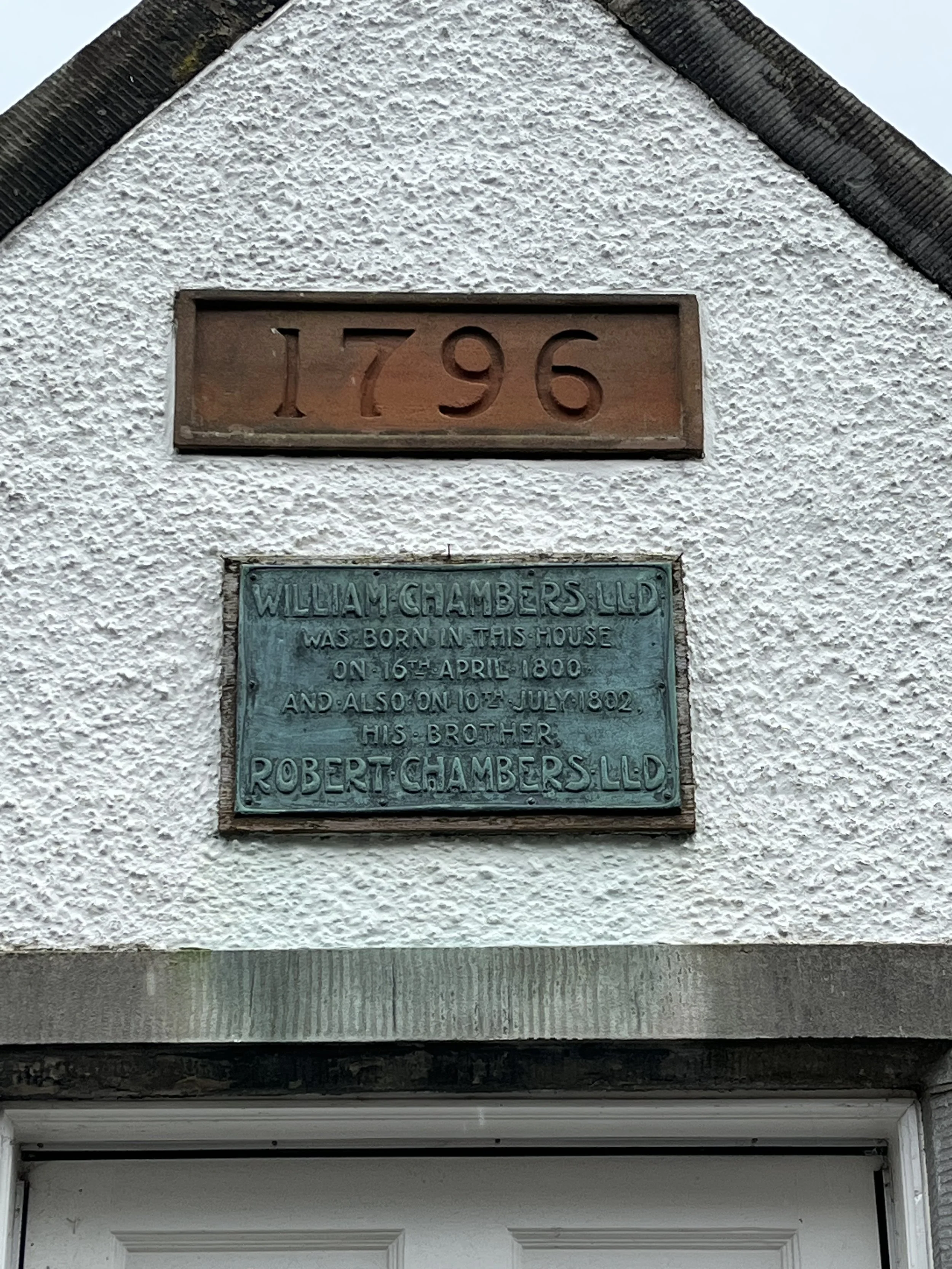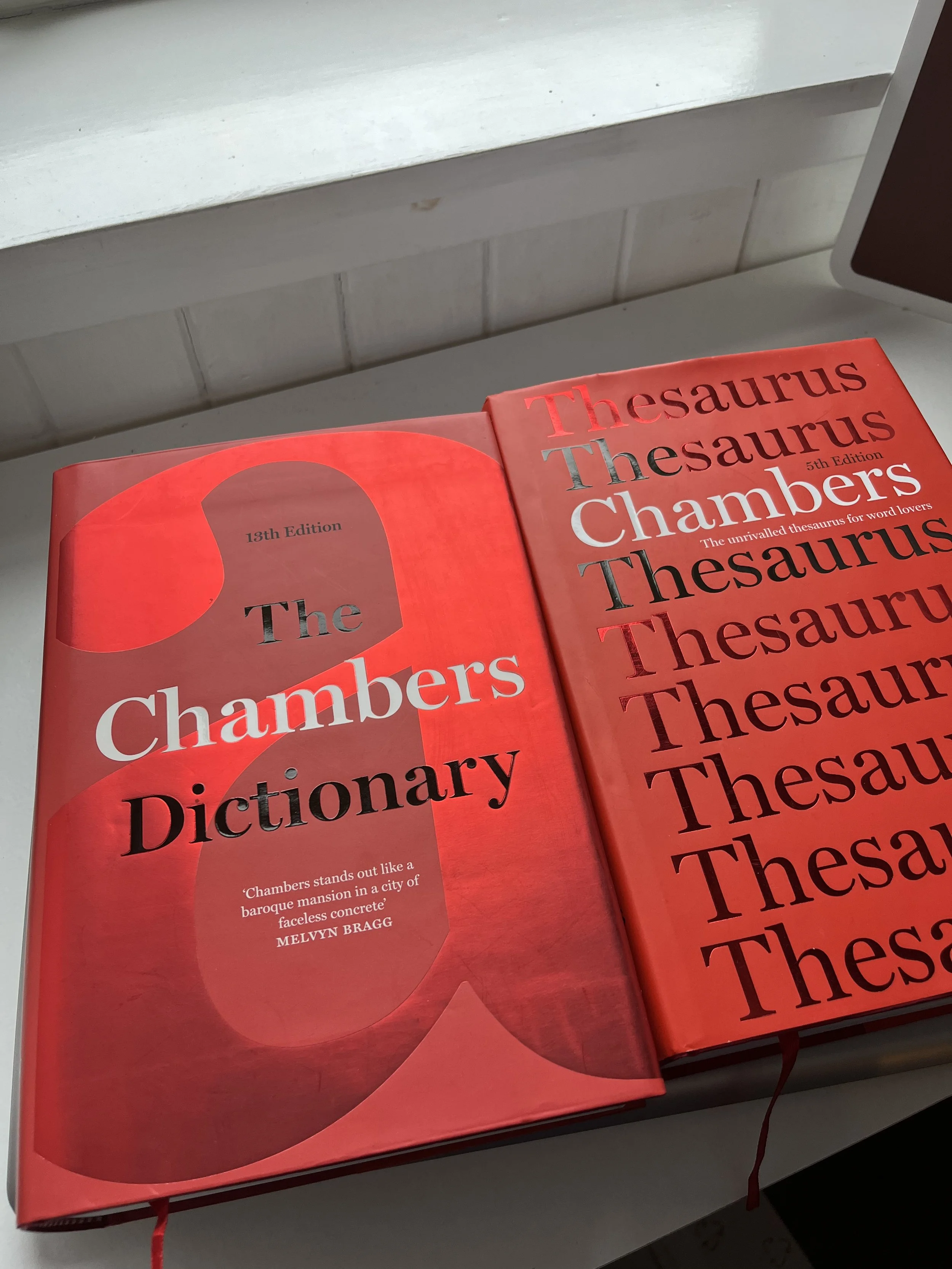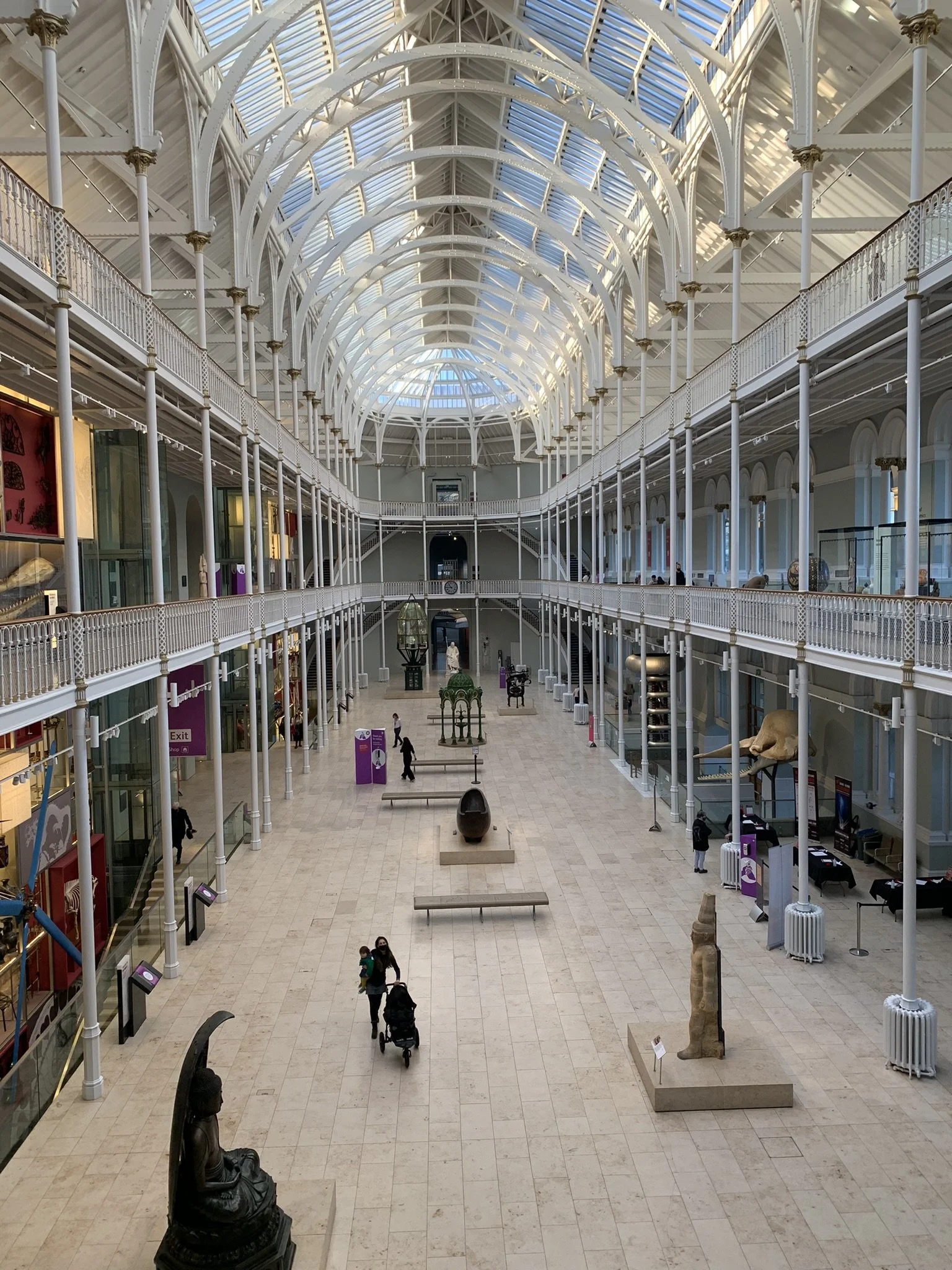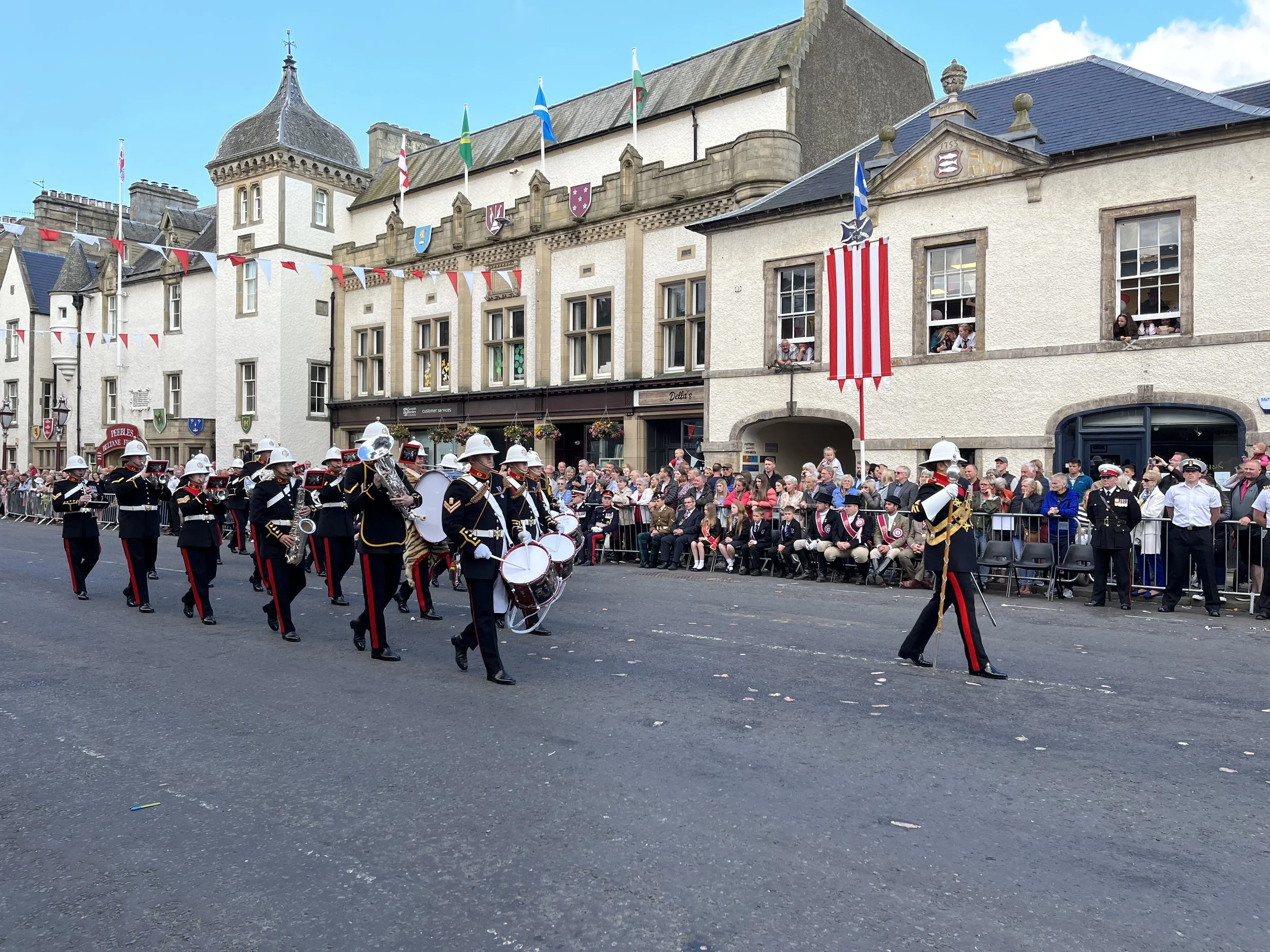Biggiesknowe, the Connoisseurs Dictionary and Peeblesshire’s finest son
Peebles Old Town is, as the name suggests, ancient. It contains the oldest building in the Royal Burgh - the tower of St. Andrew’s Church, surrounded by the town cemetery. On the wall of this venerable tower is a memorial plaque for William Chambers. Chambers was a figure of great importance in the 19th century and is someone whose name you will have heard, even if the man is a mystery. Laid to rest in the shadow of Peebles oldest building, his entry into the world also has a noteable antiquity - he was born in Biggiesknowe, the oldest remaining street in the town and in my view it’s best.
Chambers birthplace, 18 Biggiesknowe
Chambers was born into a relatively wealthy family of mill owners, and spent his early years in Peebles. At the age of 13 however things took a down turn, Chambers father declares bankrupt and the family moved to Edinburgh. From his early days Chambers was a man of letters and his first job was as a bookseller, with a shop on the corner of Broughton and Forth Street, right at the edge of the Uber fashionable New Town. If you wish to make a pilgrimage to Chambers shop now you will find it’s a tattoo parlour. Chambers, along with his younger brother Robert, branches into printing and publishing. They produced a number of periodicals (or magazines), attuned to the enlightened Edinburgh of the day. They also created an encyclopaedia and, in their most lasting national legacy, the Chambers English Dictionary. This was first published in 1872, when both men were past retiring age but still working hard. The Chambers is today regarded as the connoisseurs dictionary, a favourite of crossword setters, puzzle lovers and word geeks in general. It is definitely my go to dictionary, long before I knew of the Peeblesshire connection. Yes, I know; what sort of geek has a favourite dictionary? Well, me for starters - Chambers is full of quirky, archaic and occasionally hilarious definitions. The 13th volume is never far from my desk.
My copies of the 13th Chambers Dictionary and 5th Thesaurus
Chambers became a favoured son of Edinburgh - he rose to the loftiest position in the Capital, that of Lord Provost. His time in office left many legacies including the restoration of St Giles Cathedral and, winningly, paid for the licence of Greyfriar’s Bobby and giving the wee dog his collar which can still be seen in the Museum of Edinburgh on The Cannongate. I’ve skipped over the story of an Edinburgh legend, far more worthwhile and in depth biographies of this time are available. One closing thought on this period of his life is the incredible honour his city bestowed on him by naming a street after him and erecting a statue. Not just any street either - Chambers Street is an elegant, wide street on the edge of the old town and home to some notable buildings. The Sherriff Court, Old College of Edinburgh University and, of course, The National Museum of Scotland, which in a good year attracts upwards of 2 million visitors. Chambers’ statue gazes into the museum, a neat metaphor for the man of letters whose writing and publishing demonstrated a massive curiosity about the world around him.
The National Museum of Scotland, Chambers Street
So what more of the Peeblesshire legacy of Chambers? He did return to live in the area, in 1851 he lived as Mr William Chambers of Mansion House, Glenormiston in the Parish of Innerleithen. Indeed, he kept the Glenormiston addition to his name until his death. Sadly the mansion house is no more but changes Chambers made to the estate can still be seen in the ornate gateway and lodge which sits right on the now worryingly busy and fast A72. The records show that the gentleman farmer was skilled at husbandry and Glenormiston was a well run estate under his stewardship. Today the estate is home to many modern houses and, very soon, an exciting self catering eco pod business run by friends of mine.
Perhaps Chambers two most lasting bequeaths to his native Shire are his book “A History of Peeblesshire” and the institute which bears his name on Peebles High Street. The book is the gold standard of historical literature about this area and required reading for anyone researching Peeblesshire. It is long out of print but copies can be obtained online or for free at Peebles excellent library. The Library is housed in the Chambers Institute, buildings donated to his native town by Chambers and now including the Library, Tweeddale Museum, Citizens Advice Bureau, Go Tweed Valley and more. A true hub of the community and the benevolent gift of not only Chambers but also that other great Scot Andrew Carnegie, whose enormous fortune made in steel was used to build libraries across the UK. Money from the Carnegie Trust was used to extend the institute at a later date giving Peebles this magnificent public building in the heart of town.
The band of the Royal Marines, Scotland, play at Peebles Beltane Festival. The Chambers Institute is the building behind them.
So there you have it, a son of Peeblesshire who has left a huge mark on both his native county and his country as a whole. Chambers and his brother Robert are worthy of far more in depth biography and comment than I have created here, however I hope that this brief story has shone a light on a man who I believe has a very strong case to call himself Peeblesshire’s finest son.
PS. The astute reader will be wondering “isn’t there a Chambers Street in Innerleithen and Chambers Terrace in Peebles - are they named after him too?” My feeling is yes, this must be the case given his time as Victorian Gentleman Laird of Glenormiston and famous Peebles son but I haven’t been able to prove it. I put it to you dear readers, if you know this to be the case please get in touch - I’m looking at Mr Ted McKie in particular here!!





